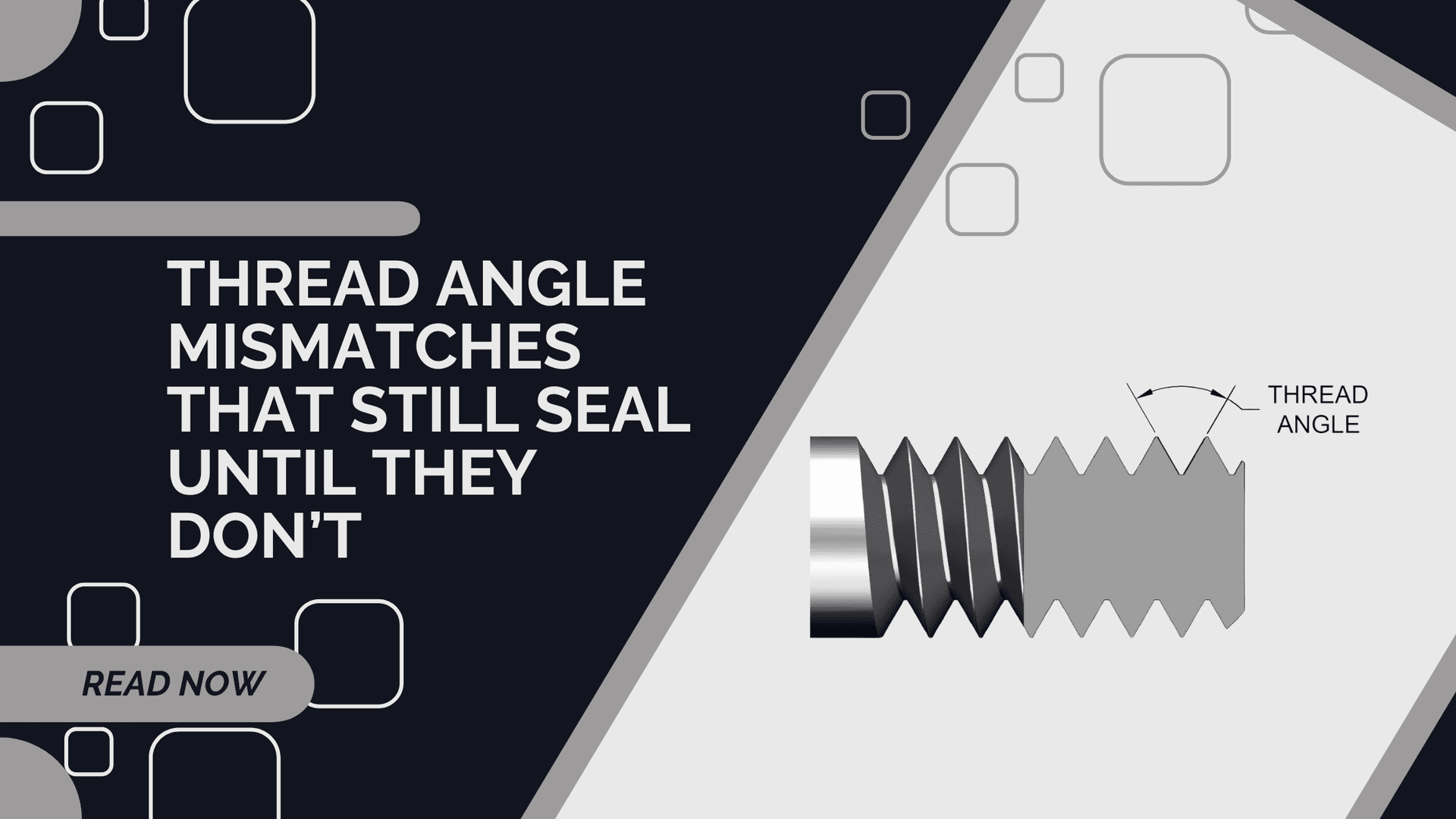Thread Angle Mismatches That Still Seal - Until They Don’t

Threaded connections are the backbone of reliable mechanical and hydraulic systems. While matching the correct thread size and type is standard practice, thread angle mismatches can sometimes go unnoticed—allowing parts to seal temporarily, but with hidden risks that can compromise safety and performance down the line.
What Are Thread Angles and Why Do They Matter?
A thread angle is the angle formed between the sides (flanks) of a thread. Common standards, like Unified National (UN) and Metric threads, specify precise angles (typically 60 degrees). Correct thread geometry ensures components fit together securely, distribute forces evenly, and maintain system integrity.
How Do Mismatches Happen?
Thread angle mismatches can occur due to using incompatible standards, worn-out manufacturing tools, or sourcing non-standard or damaged components. Over time, corrosion or wear can also change the thread profile, making mismatches more likely.
Why Might a Mismatched Thread Still Seal?
Surprisingly, some mismatched threads will initially create a temporary seal. Material elasticity allows a small amount of deformation, while lubricants can help parts seat together. However, this apparent fit is deceptive: the joint is not optimized for long-term strength or sealing performance.
The Risks: Fatigue, Leaks, and Failure
- Fatigue & Wear: Uneven stress on mismatched threads leads to premature wear, thread stripping, and even breakage.
- Leaks: Temporary seals can fail under pressure, resulting in fluid or gas leaks—posing safety and environmental risks.
- Reduced Performance: Misfit connections can introduce vibrations, noise, and misalignment, affecting overall system efficiency.
How to Prevent Thread Angle Mismatches
- Use Standardized Components: Always specify and source parts according to recognized standards (e.g., UN, Metric).
- Quality Control: Inspect and verify threads during manufacturing and assembly. Use precision tools and regularly calibrate equipment.
- Training: Ensure your team understands the importance of thread standards and proper assembly practices.
What If You Find a Mismatch?
If a mismatch is discovered, best practice is to replace the affected parts. In some cases, re-tapping or re-threading may be possible, but it’s not always recommended, especially for high-pressure or critical applications. Thread sealants can provide a short-term fix but shouldn’t be relied upon for long-term performance.
Conclusion
Thread angle mismatches are a subtle but serious threat in mechanical and hydraulic systems. They may seal for a while, but the long-term risks to safety, performance, and reliability are real. Prioritizing the right parts, proper inspection, and standardization will protect your systems and your business.
Secure Your Hydraulic Systems with Titan Fittings
Don’t let thread mismatches compromise your operation. Titan Fittings supplies high-precision stainless steel fittings, hose fittings, valves, and adapters—engineered for the highest standards of reliability. Shop now to ensure lasting performance in every connection.